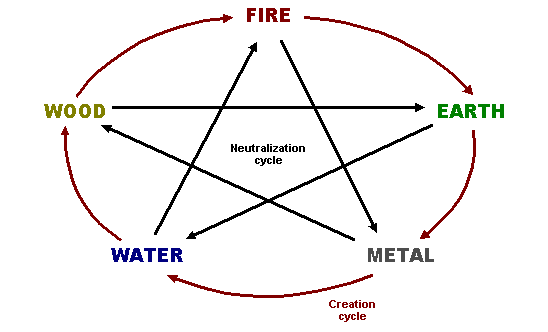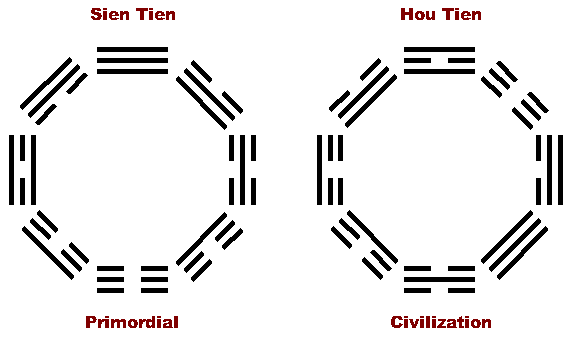
CHINA ARTS COUNCIL
Chinese Cooking Theory
The Five Element Theory
The Five Elements expresses the interplay of the basic components or ingredients. Each of the elements neutralizes or counterbalances another element and each element creates a desire for another element.

In assembling a dish or planning a menu, always keep in mind the two Five Element cycles.
| The Five Elements | The Five Tastes | The Five Foods |
| Metal | Sweet | Pork/Chicken |
| Earth | Salty | Duck/Turkey |
| Water | Sour | Fish/Shellfish |
| Fire | Hot | Beef/Lamb |
| Wood | Bitter | Vegetables/Fruit |
| The Five Elements | The Five Preserving Methods |
| Metal | Candying |
| Earth | Salting |
| Water | Pickling |
| Fire | Drying |
| Wood | Fermenting |
| The Five Elements | The Five Cooking Methods |
| Metal | Stir-fry |
| Earth | Roast |
| Water | Poach/Braise/Stew/Soup/Casserole |
| Fire | Fry |
| Wood | Steam |
Pungent Preserved Food for Flavoring
| Metal | Fire | Earth | Water | Wood |
| Dried fatty | Lean dried | Salted | Pickled | Fermented |
| Pork belly | Shellfish | Fish | Shallots | Bean curd |
| Pork sausage | Vegetables | Radish | Mustard green | Black bean |
| Duck liver sausage | Fish | Mustard | Cucumber | Shrimp |
| Pressed duck | Nuts | Egg | Pig's feet | Rice wine |
| Beef | Fruit | Turnip | Bamboo shoots | Egg |
Savory Foods for Flavoring
| Roast pig |
| Roast pork |
| Fried meats |
| Wheat gluten |
| Soy braised foods |
The Eight Trigrams
Used in divination, and as a system of organization of relationships and process, the eight trigrams are organized in two classic patterns:

Yin-Yang Theory
The duality of Yin and Yang creates contrast, tension, conflict, or balance. Consistent pairing of opposites makes dishes and menus appealing, interesting, and healthful.
| Yin Foods | Yang Foods |
| Green vegetables | Root vegetables |
| Chicken | Duck/Squab |
| Pork | Beef/Lamb |
| Fish | Shellfish |
| Tofu | Beans |
| Dairy | Squash/Gourd |
| Tea | Nuts/Seeds |
| Non-acidic fruit | Acidic fruit |
| Yin Processes | Yang Processes |
| Steam | Dry |
| Boil | Stir-fry |
| Stew | Roast |
| Chill | Ferment |
| Braise | Deep-fry |
| Yin Seasonings | Yang Seasonings |
| Young soy (thin) | Old soy (black) |
| Ginger | Chili/Pepper |
| Sugar | Salt |
| Mushroom/Fungus | Onion |
| Anise | Garlic |